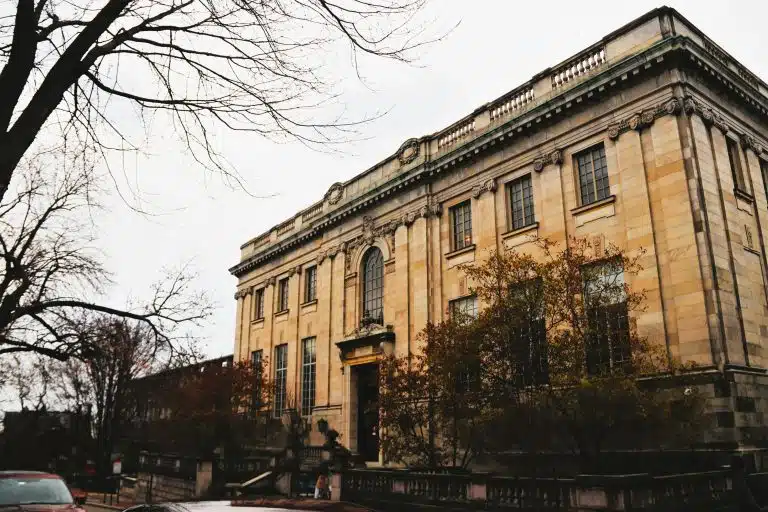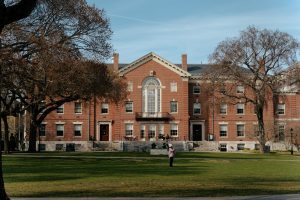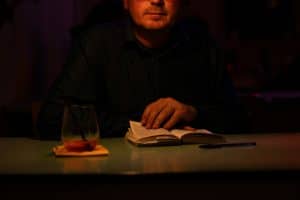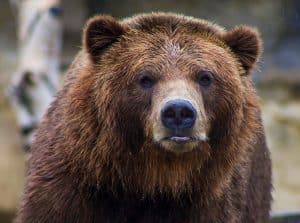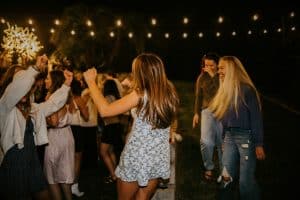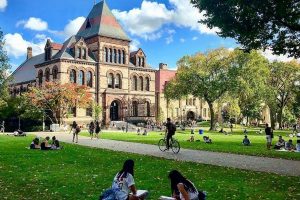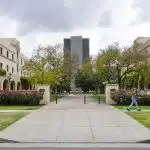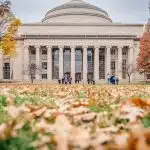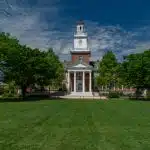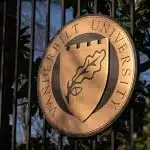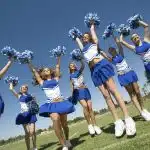Brown University is one of the oldest and most prestigious Ivies. Set on a historic campus in Rhode Island, Brown is known for its flexible academics and strong commitment to inclusion and creative thinking. Brown is currently ranked #13 among national universities and has a highly competitive 5.65% acceptance rate.
But beyond the stats, what really sets Brown apart? In this blog, you’ll discover 10 fun facts about Brown University that might surprise you. Whether you plan to apply or just want to learn more, keep reading to learn what makes Brown unlike any other Ivy.
- Top 10 Fun Facts about Brown University
- Brown University Traditions You Should Join
- Frequently Asked Questions
- Takeaways
Top 10 Fun Facts about Brown University
If you’re a high school student aiming for top-tier colleges, Brown University is likely on your college list. As one of the eight Ivy League schools, Brown offers a rigorous education, outstanding student support, and a campus culture built around curiosity and learning.
What makes Brown truly different is the freedom it gives you to shape your own education. With no required core classes and an open curriculum, you can explore what excites you and design a path that fits your interests. It’s a perfect place for those who want to prioritize creativity and flexibility in college.
Brown’s admissions process is very competitive, so knowing what makes the school unique can give you a better sense of whether it’s the right fit. Here are some fun facts about Brown University you’ll want to remember:
1. The Van Wickle Gates only open twice a year.
At the center of Brown’s campus stands a pair of wrought iron gates that students treat with near-mythical caution. These are the Van Wickle Gates. Built in 1901, they open only twice a year: once inward for Convocation, when first-years are welcomed, and once outward for Commencement, when seniors graduate.
The superstition is simple. If you walk through the center gate any other time, you might curse your chances of graduating. It might sound silly, but students take it seriously. Some even go out of their way to avoid walking near it unless they’re ready to graduate.
There’s something cinematic about the whole ritual. First-years march in with excitement and nerves. Four years later, they walk out in caps and gowns, cheered on by friends and family. The gates neatly bookend your time at Brown.
The tradition reflects Brown’s values: enter with curiosity and leave with purpose. It’s one of those quirky traditions that makes Brown memorable long after graduation.
2. Meet the fictional professor with his own holiday.
Brown students celebrate a holiday for a professor who never existed. His name? Josiah S. Carberry, a legendary scholar of psychoceramics (the study of cracked pots). He was invented in 1929 as a prank and quickly became part of Brown lore.
According to the story, Professor Carberry was always just about to arrive on campus but never actually showed up. On Friday the 13th, Brown celebrates Carberry Day in his honor. The tradition involves placing small brown jugs around campus for students and faculty to drop in spare change.
The money goes to the Josiah S. Carberry Fund, which was mysteriously “donated” in 1955 to support books that Carberry “might or might not approve of.” The fund is also dedicated to his “future late wife Laura,” another fictional detail that adds to the joke.
Carberry Day is a true Brown tradition. The first celebration was held in 1956 with a campus newspaper article about his “life and work.” Today, it’s a fun excuse to laugh, leave change in jugs, and embrace the weirdness that makes Brown unique.
3. Brown’s marching band doesn’t march.
Yup, the Brown Band isn’t your average marching band. Known for its humor, energy, and offbeat traditions, the band turned 100 years old in 2024, making it one of Brown’s oldest student-led organizations.
Founded in 1924 by freshman Irving Harris, the band is a key part of campus life. You’ll see (and hear) them at football games, convocation, and commencement, bringing music and fun wherever they go.
However, don’t expect a traditional performance. Brown’s band is a scramble band, meaning instead of doing precise marching routines, they run chaotically across the field to form shapes and deliver satirical scripts. Each show mixes clever commentary and musical energy that always gets a laugh.
Then there are the Brown Band buttons, which are a tradition all their own. The band hands out custom buttons for every football game with funny, pun-filled slogans targeting the opposing team. Favorites include “Why you always lion?” (for Columbia) and “Legally Bland” (for Harvard). It’s weird, witty, and uniquely Brown.
4. These famous faces all went to Brown.
Brown University has produced an impressive list of alums who have left their mark in various fields. From public service to pop culture, Brown grads are known for taking bold and creative paths after graduation.
Emma Watson, best known as Hermione Granger in the Harry Potter films, earned her degree from Brown in 2014. John F. Kennedy Jr., son of President JFK, graduated in 1983. Brown is also the alma mater of Janet Yellen, the first woman to serve as U.S. Secretary of the Treasury.
Other alumni include author Amy Chua, who wrote “Battle Hymn of the Tiger Mother,” comedian Rachael Harris, and several Olympic medalists and members of Congress.
The university encourages students to explore widely and think boldly, which shows in the careers its alumni pursue. Whether you’re into writing, acting, sports, or public service, going to Brown means joining a network of role models who have done it all.
5. Brown’s former mascot was an actual bear.
Believe it or not, Brown’s mascot wasn’t always a student in a bear costume. Back in the early 1900s, Bruno the Bear was a real, live animal. The tradition began in 1905, when a live bear was brought to a football game against Dartmouth, instantly becoming a crowd favorite.
Theodore Francis “T. F.” Green, a Brown alumnus, Roman law professor, and later governor of Rhode Island, suggested using a bear as Brown’s mascot. Green believed the bear represented strength, independence, and courage, which he felt reflected the Brown spirit.
Live bears continued to appear at sporting events for several decades, but by the mid-1960s, the tradition shifted to the costumed version students know today. It was a more practical and humane choice, but the legend of the original Bruno still lives on.
You’ll still see Bruno all over campus, just not the breathing kind. From the popular “Bronze Bruno” statue to other bear sculptures scattered across Brown, these tributes to the mascot are favorite selfie spots and a lasting symbol of Brunonian pride.
6. Brown had a much longer original name.
Before it became Brown University, the school had one of the country’s longest names of any college. Its original name was “The College in the English Colony of Rhode Island and Providence Plantations.“ Try saying that five times fast or fitting it on a hoodie!
The name reflected the school’s location and colonial roots. It was founded in 1764 before the American Revolution, so the “English Colony” part made sense at the time. Still, you’re probably surprised to learn Brown had such a formal, old-fashioned name.
In 1804, the school was renamed Brown University after Nicholas Brown Jr., a wealthy graduate, donated $5,000 to support the college. That was huge back then, especially since tuition was only about $5.
In 2020, Brown officially stopped using the full original name on diplomas and official documents, recognizing its ties to slavery and outdated language. The change was part of a broader push to reflect the university’s values today.
7. Brown welcomed students of all religions from the start.
When Brown was founded in 1764, most colleges in the U.S. required students to follow a specific religion. However, Brown didn’t. It was the first Ivy League school to accept students regardless of their religious background.
That was a bold choice for the time. While other schools were busy training ministers or enforcing strict rules, Brown opened its doors to a broader mix of beliefs and backgrounds. From day one, it valued freedom in academics and how students lived and thought.
The school’s original charter even promised that “into this liberal and catholic institution shall never be admitted to any religious tests.” In other words, no one would be judged or excluded for their faith or lack of it.
This openness drew students from all over and helped shape Brown’s identity as a place for free thinkers. Long before “diversity” became a buzzword, Brown was already putting it into practice.
8. Brown has the oldest engineering program in the Ivy League.
Most people don’t think of Brown when it comes to engineering, but it actually has the oldest engineering program in the Ivy League. The program launched in 1847, at a time when very few American colleges even offered engineering at all.
Brown’s approach has always been different. Instead of focusing only on formulas and machines, the program combines technical skills with creativity. Students are encouraged to explore problems from multiple angles. In short, you’ll build things but also understand their impact.
You’ll find concentrations in areas like biomedical engineering and materials science. And thanks to Brown’s open curriculum, you can pair engineering with anything from visual art and music to public policy and entrepreneurship.
The program is housed in the School of Engineering on the east side of campus. It’s a close-knit community where students build, prototype, collaborate, and launch ideas. You might even find them teaming up with Brown’s medical school or local startups.
9. Quiet Green is the most peaceful spot on campus.
In the middle of Brown’s campus, you’ll find a grassy, tree-lined area known as the “Quiet Green.” Also called the “Front Green,” it’s one of the oldest and most peaceful parts of the university. Surrounded by historic buildings, it feels like a calm pocket in the middle of campus.
This space once served as the original public face of Brown back in its pre-Revolutionary War days. Today, it’s a favorite spot for students to study, nap, read, or just lie in the grass between classes. Unlike the busier College Green nearby, the Quiet Green lives up to its name.
Whether you’re taking a walk, clearing your head, or soaking in some sun, the Quiet Green offers a quiet moment in a place bursting with energy.
10. The John Hay Library holds some truly rare treasures.
The John Hay Library isn’t your average campus library. Sure, it’s quiet and full of books, but some of those books are one-of-a-kind, and others are downright strange. This is where Brown keeps its rarest collections, including ancient manuscripts, personal letters, and even locked-up curiosities.
The library is named after John Hay, a Brown alum who was Abraham Lincoln’s secretary and later Secretary of State. Today, the building houses over three million items, from Shakespeare’s First Folio to political posters, zines, and handwritten diaries.
One of the most talked-about parts is the Special Collections vault. It’s climate-controlled, heavily secured, and holds everything from early medical texts to a collection of books bound in human skin (yes, really! but they’re not on public display).
Students and researchers can request access to rare materials, and the staff often hosts exhibitions open to everyone. You don’t have to be a history major to enjoy them; just bring your curiosity.
Brown University Traditions You Should Join
Now that you know some fun facts about Brown University, let’s talk about the traditions that make the campus experience memorable.
1. Spring Weekend
Every April or May, Brown students look forward to Spring Weekend, one of the biggest events of the year. This student-organized music festival features live performances, food, carnival games, and a full weekend of fun. It’s a chance to unwind before finals and celebrate the end of the school year.
The tradition goes way, way back. It started as “Junior Promenade” in 1898, became “All-Campus Weekend” after World War II, and officially turned into “Spring Weekend” in 1950. By 1960, students created the Brown Concert Agency (BCA) to help bring rising artists and major acts to campus.
Since then, Spring Weekend has hosted performers from artists like Dionne Warwick, Eric Clapton, Kendrick Lamar, and Offset. Students line up for tickets, cover campus lawns with blankets, and jive to live music all weekend long.
2. Campus Dance
Campus Dance is a huge outdoor party and is one of Brown’s most cherished traditions. Held during Commencement and Reunion Weekend, it brings together graduating seniors, returning alumni, families, professors, and the entire Brown community for a night under the stars.
The event takes place on College Green, which glows with more than 600 paper lanterns. Music fills the air, and people of all ages dance, from swing to Macarena to whatever’s trending that year.
As the night winds down, the crowd gathers on the steps of Sayles Hall for Senior Sing, where graduating students sing together one last time before Commencement.
Whether you’re a senior saying goodbye or an alum coming home, Campus Dance is guaranteed to be full of laughter, nostalgia, and happy tears.
3. Halloween Midnight Organ Concert
Every Halloween at the stroke of midnight, Brown students pack into Sayles Hall for one of the most unforgettable traditions on campus. The show’s star is the Hutchings-Votey organ, a powerful 1903 pipe organ that fills the hall with eerie, echoing music in total darkness.
The organ itself is a campus treasure. It has over 3,000 pipes, around 100 miles of wiring, and countless moving parts. As the largest remaining Hutchings-Votey organ in the country, it’s a remarkable piece of history and part of what makes Brown’s Halloween experience legendary.
Resident organist Mark Steinbach has been leading the annual concert for decades. He plays haunting classics while wearing a costume that stays secret until the show. His goal is to challenge how people think about organ music—and give them chills while doing it.
Brown’s organ concerts aren’t just for Halloween, though. The university also hosts holiday performances in December, where musical groups across campus come together to spread festive cheer. Whether spooky or joyful, these concerts unite the campus community through music and tradition.
Frequently Asked Questions
1. What are some interesting facts about Brown University?
Brown has plenty of cool and interesting facts. These include a fictional professor with his own holiday, a campus pipe organ with over 3,000 pipes, and gates you can only walk through twice. It’s also home to the oldest engineering program in the Ivy League and a library with books you won’t find anywhere else.
2. What is Brown University known for?
Brown is best known for its open curriculum, which lets students design their own academic path without required core classes. It consistently ranks among the top universities in the U.S. and has a reputation for creative freedom, inclusive values, and a campus culture that celebrates individuality.
3. What makes Brown unique?
Unlike other Ivies, Brown puts students in charge of their learning, encouraging risk-taking and interdisciplinary study. Located in Providence, its mix of historic traditions, academic flexibility, and beautiful Colonial New England campus sets it apart from the rest.
Takeaways
- Brown University is full of fun facts, from historic traditions to iconic campus landmarks.
- Its open curriculum and commitment to inclusion make it stand out among the Ivies.
- Traditions like the Brown Band and Van Wickle Gates give Brown a distinct personality.
- Events like Spring Weekend and Campus Dance bring the entire community together.
- Is Brown your dream school? Work with a college admissions expert to help strengthen your application and boost your chances of becoming a Brunonian.

Eric Eng
About the author
Eric Eng, the Founder and CEO of AdmissionSight, graduated with a BA from Princeton University and has one of the highest track records in the industry of placing students into Ivy League schools and top 10 universities. He has been featured on the US News & World Report for his insights on college admissions.

